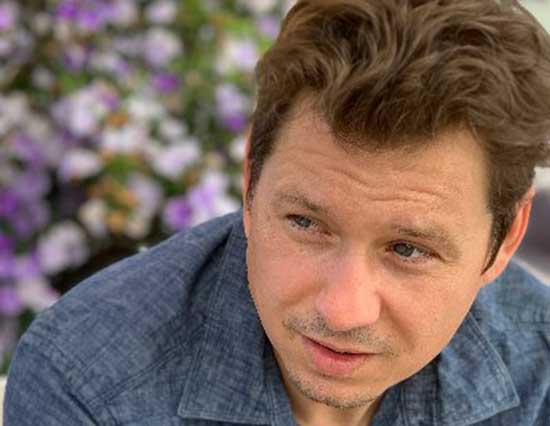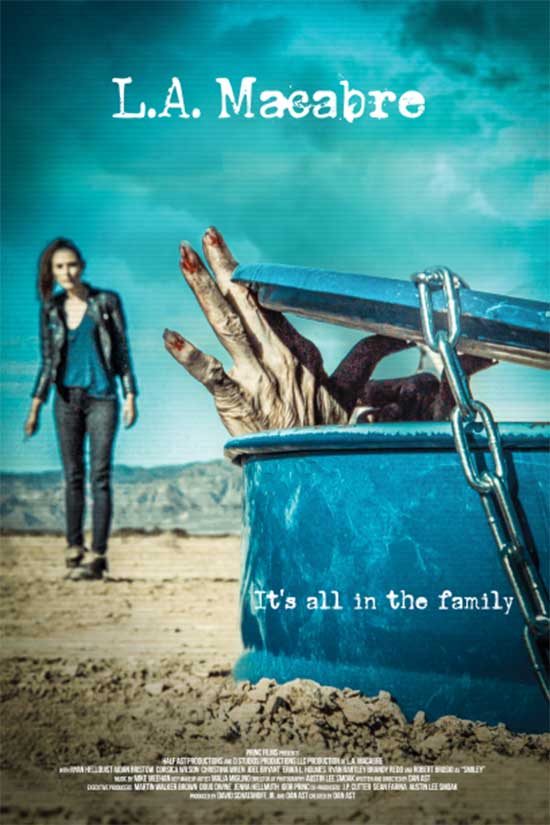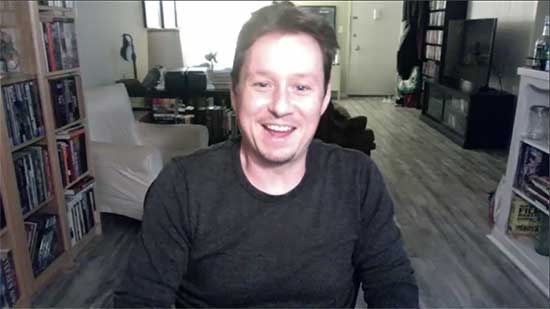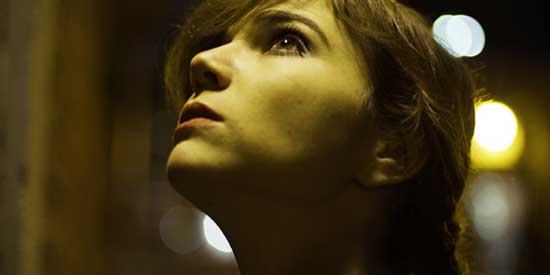Director/Writer, Dan Ast (Vampires) took time to do a zoom interview with me for Horrornews.net. We talk about his new series L.A. Macabre which is available on Amazon Prime. L.A. Macabre is a fascinating, refreshing series. The city of Los Angeles also becomes a character in the series. We chat about everything from building sets, the St. Francis Dam history, cults, and more.
L.A. Macabre synopsis:
“Three filmmakers interview a former member of the defunct cult “The New Family” leading them down a path of mystery, kidnapping and murder.”
HNN-L.A. Macabre is really different and good as far as found footage/documentary type of shows and t’s usually people looking for aliens, Bigfoot. This was fascinating and creepy. It felt like a True Crime show with everything the “Manson Family” had done. How did this idea manifest for you?
D.A.- I think you kind of nailed it with the Manson Family. It really came from Helter Skelter. I was reading the book one night. It was dark in the living room and kind of quiet out and I was struck by the “creepy crawling.” The notion that they would sneak into people’s houses and they would move the furniture around, just to let them know they were there. That kind of psychological terror that they would inflict on people, even before you got to the violence. There’s been a couple of Helter Skelter movies, there had been plenty of Manson movies. When I did the first season back in 2014, Manson had already been done. I felt like none of them had really gone after the things in that story that chilled me when I read the book. It was things like the creepy crawling and a lot of the psychological stuff. The damage that had been done to his followers, the manipulation to the extent that you could get these people to do these things. It was that aspect of it that I was interested in kind of telling it in a fictional way but, hopefully in a way that felt real and relatable.
HNN-That aspect of it was interesting because these were real people and they committed horrible crimes. The “creepy crawling” is scary. Imagining someone just coming in and moving your stuff around. That was psychologically terrifying. I don’t want to give away spoilers but the creepy crawling return scene was scary because she seemed so happy. It’s scary that people will listen to one person, Charles Manson was one person. I know there are other cults like Jonestown, Heaven’s Gate, and Waco. Manson was one person telling these people his “beliefs.” It’s powerful and scary at the same time.
D.A. Yes, absolutely. I have to give a shoutout to my friend Lola, she runs a Podcast called, Trust Me. Lola and her co-host interview people that used to be in cults and she and her co-host had also been survivors of cults. Lola has a cameo in a couple of episodes in season two. On the very first episode of the Podcast, she’s interviewing her mother. The whole sort of tact of the Podcast is to say, it’s really easy to dismiss people who are in cults as having been not smart enough or not aware enough. There tact is very much like, it could happen to you. What challenged me on that was when her mother said, “it’s a lot like having been in an abusive relationship.”
HNN-Will there be a season three?
D.A.- So, yes. The goal was always to have the three-season arc. I would like there to be a season three. We would love to do a season three. It comes down to if we can find the support. It was a small crew. It really is just a few people wearing far too many hats. That was part of the trick. We wouldn’t be able to do season three that way. We really do hope that we’ll find the funding. It is supposed to finish out the story. There are some spin-off movies that I would like to make.
HNN- A spin-off would be interesting. Would you go the same direction or would you shift around?
D.A.- I’ve already written the first spin-off film. It’s a ninety-minute horror movie. It’s very much a horror movie.
HNN-Everyone did such a good job from what I watched so far. What was it like working with everyone and getting everyone prepared?
D.A.- During season one, I didn’t make anybody, but I suggested they read Helter Skelter to kind of get a sense of why it creeped me out. After that it was sort of just conversations and the distinctions between somebody who is bought in by a cult and manipulated from their day-to-day life. Or, in Callie’s case, we thought it was interesting that she was raised in a cult. We didn’t tell them more than they needed to know and we continued that into season two.
HNN- Oh, okay. That’s a good idea in many ways.
D.A.- I don’t want to go too far down about how far we took this. We have some twist that some people didn’t know about until much later. It was kind of a fun thing to figure out how to direct certain characters so they only had so much information.
HNN- I think you did a good job with this. I was a little creeped out during the creepy crawling with Callie. I don’t want to spoil anything but that was kind of creepy. You don’t expect someone to want to go back to something like this so easily.
D.A.- I’m really glad to hear that. That is how we wanted that to feel. We wanted this sinking feeling. I don’t know if this is a fair analogy and it’s not at all to undercut people who deal with addiction, but it’s kind of that same notion of reintroducing somebody to something that they broke free of. It contains certain risks but ultimately, they have to make those choices for themselves. I think she did a wonderful job and one of my favorite things about the creepy crawl from a production stand point is that it is a one-take. We didn’t plan that to show off, it was just the easiest, fastest ways to shoot the scene.
HNN-It was interesting that Los Angeles sort of became a character in the film. In The Texas Chainsaw Massacre or Psycho, the houses almost become characters in the films. That’s sort of how I look at Los Angeles in L.A. Macabre. Did you sort of plan for that to happen?
D.A.- I had hoped that it would so it’s exciting to hear that. I love Los Angeles. It’s a weird city, it’s not a perfect city. It’s got a lot of problems. I kind of love all of its weird broken charm. It’s got a very strange history that I think tends to get overlooked, because it’s a fairly young city in its modern context. I mean obviously, there were people who lived in these areas long before it became a state or a territory or Los Angeles. It’s kind of in its modern context that we think of it, it’s only about one hundred and fifty years old. That’s pretty young, even in the U.S. for a major city. I think it tends to get overlooked. It’s also seen as this empty vapid entertainment-based place. It’s got a really fascinating history. Even in just the last fifty to a hundred years. It’s history of diverting water from other places. The St. Francis dam disaster, which nobodies ever heard of, but it’s one of the most interesting tidbits that I carry around and present to people. Dismantling the trolley lines and putting in the freeways. It’s a fascinating city. It’s got these little pockets of history. Even the diner that we film in. That’s the first place I ate in L.A. I love the history. We wanted to find as many of those as possible.
HNN-I don’t believe I have ever read much about the St. Francis dam. That’s fascinating. I find locations and history locations to be interesting.
D.A.- I will recommend a couple of books while we’re here. There’s a book called, Floodpath by Jon Wilkman. That is the broken dam on the cover. This was the second largest disaster in California history at the time. It was second only to the 1906 earthquake. There’s a book called, Thirsty. It’s a general history of essentially how a city that didn’t have any water was able to become a metropolis by taking water from other places. Those two books are good.
HNN-I will definitely look into that. That’s crazy.
D.A.- Yeah.
HNN-I thought that was cool that you did include some legendary places in Los Angeles. It sort of feels like the characters melt together with the locations. The city does become a character.
D.A.- I’m really glad to hear that.
HNN-Did you face any challenges while you guys were shooting?
D.A.- Yes, it took two years just to film the second season. Mostly on weekends or five- or six-day stents. Again, small crew, good sized cast. We really were a big family, we joked that were kind of our own cult, our own new family, because we were tight-knit and we got along so well. We would shoot on weekends or for a lot of the desert stuff, we would rent houses or cabins. We would make a bunch of crock pot meals. We would make twenty something crock pot meals, one meat and one vegetarian. The desert is a rough place to shoot. The finale was, without giving a whole lot away, very much in the desert, I think it was July? It was 115 degrees most days. The building that we were staged in didn’t have power. We were charging batteries in the car, and we bought a lot of ice at the gas stations. We were drinking lots of water. Then you have to go out and shoot an action sequence and try to do it safely. It was a safely run set. A childhood friend of mine was out stunt coordinator. She was killing it. I’m really proud of how the whole team pulled that off.
HNN-It’s mind-blowing hearing the stories about how you guys are shooting a film or series. And in this series, it’s someone shooting and then you directing them. It seems complicated. It’s so amazing to hear these stories and then you get an awesome series or a film. Did you have any kind of preparation?
D.A.- Our cinematographer, her name is Austin Lee Smoak. She’s a friend of mine and a collaborator. We went to film school together. She’s a great gaffer because we didn’t have one of those either. She would set the lights and light the room, and then work the camera. Both seasons she was working the camera, even when it looked like the characters were holding the camera, Austin was actually the camera person. When there’s hand held, she’s usually holding the camera unless it’s two cameras going at once. I come from more of an editing background. A big part of the answer to your question is just having an immense amount of trust in Austin, and Dave Schatanoff, our producer and sound person onset. We have very little ADR in the show. Dave would build sets in his garage occasionally. I built sets in my backyard. There’s like three or four people that are kind of doing so many things. Malia Miglino came onto the second season and did all of the make-up. She built the make-up bible. It was also having a lot of trust in the cast.
HNN-What was it like for the cast?
D.A.- They had to figure out the blocking and learning how to work around Austin. Ryan Bartley who plays Jamie would work with Austin to figure out the movements together.
HNN-What do you want to say to the people who will be watching L.A. Macabre? What do you want them to know from your perspective?
D.A.- The thing I wish I could get everybody to know about the show. It’s a little self-serving because you don’t get to tell people what it was like to make the thing. You want them to evaluate the show on its own merits. I do want them to understand that it was a small budget and we had a Kickstarter campaign. It went really well. We have these incredible backers and executive producers that helped us get over the finish line. The writing and the filmmaking, the show is designed to be watched twice.
HNN-I think all of you did such an incredible job. Season one and two are excellent. All of you did such a great job with L.A. Macabre. The amount of talent and the editing, camera work. This is something refreshing and new. It’s awesome. I thank you so much for taking the time to do this zoom interview.
D.A.- I’m glad. I appreciate that. Thank you.
@LAMacabre on Twitter
To watch L.A. MACABRE ON AMAZON PRIME
 Horror News | HNN Official Site | Horror Movies,Trailers, Reviews
Horror News | HNN Official Site | Horror Movies,Trailers, Reviews




